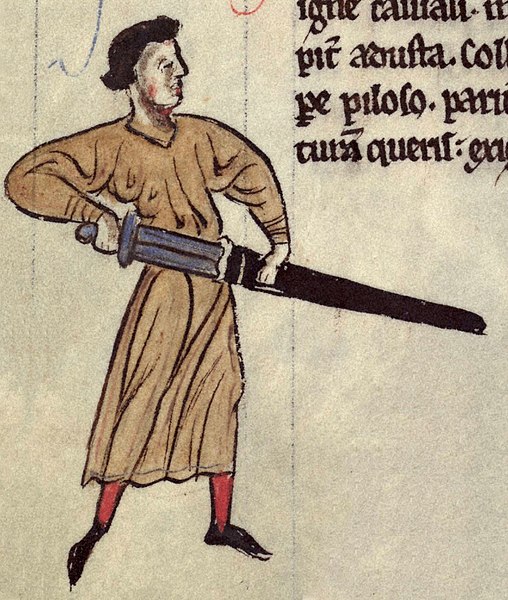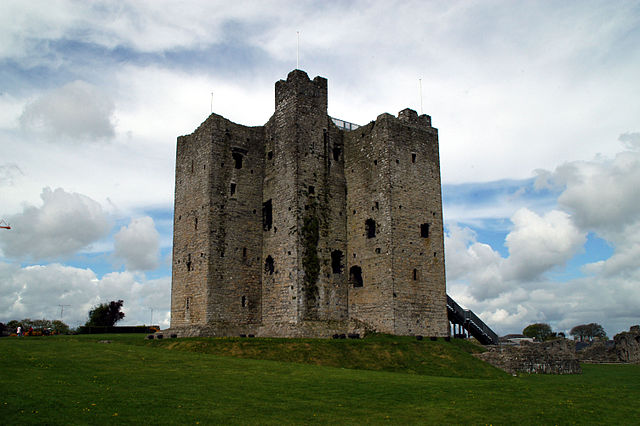The Lordship of Meath was an extensive seigneurial liberty in medieval Ireland that was awarded to Hugh de Lacy by King Henry II of England by the service of fifty knights and with almost royal authority. The Lordship was roughly co-extensive with the medieval kingdom of Meath. At its greatest extent, it included all of the modern counties of Fingal, Meath, Westmeath as well as parts of counties Cavan, Kildare, Longford, Louth and Offaly. The Lordship or fiefdom was imbued with privileges enjoyed in no other Irish liberty, including the four royal pleas of arson, forestalling, rape, and treasure trove.
Motte-and-bailey built by Hugh de Lacy at Clonard, Co Meath
Hugh de Lacy, Lord of Meath
Hugh de Lacy, Lord of Meath, 4th Baron Lacy, was an Anglo-Norman landowner and royal office-holder. He had substantial land holdings in Herefordshire and Shropshire. Following his participation in the Norman Invasion of Ireland, he was granted, in 1172, the lands of the Kingdom of Meath by the Anglo-Norman King Henry II, but he had to gain control of them. The Lordship of Meath was then the most extensive liberty in Ireland.
Drawing of de Lacy by Gerald of Wales
The keep of Trim Castle
Kilkea Castle (Front)
Motte-and-bailey built by de Lacy at Clonard, County Meath




